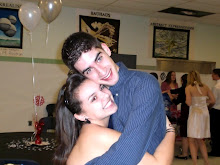
Fransisco Goya’s painting entitled “Saturn Devouring His Son” is part of a series called the “Black Paintings”, painted on the walls of his dining room in his house on the banks of Manzananos. The image portrays the god Saturn eating one of his children, and is modeled after Ruben’s 1630 image which was much more refined. The painting portrays the Roman myth of the god Saturn devouring his sons out of fear that they would someday kill him, and take on his role as a god. Following Goya’s death in 1836, the “Black Paintings” were transferred onto canvas.
The painting exhibits a crazed man eating a corpse. The image is comprised primarily of earth tones, with hues of crimson, russet, and brown. The figurative Saturn is devouring the left arm of the corpse, and the head and right arm are gone. The focal point of the piece is the blood dripping from the corpse’s fresh wounds and also Saturn’s insane expression. His eyes are protruding, and he is kneeling on the ground in a very animal like way. There is a special emphasis on the blood on the corpse and in Saturn’s hands. There is an evident chiaroscuro, and the overhead light is primarily on the shoulders, face, and legs of Saturn as well as on the corpse. The field is black to emphasize the violent scene, and Saturn’s body is a subtle gray.
The image is modeled after Ruben’s work in 1630, yet the emotions being provoked are entirely different, as Ruben’s pieces were more refined and Saturn was portrayed much more elegantly. In Goya’s piece, Saturn is primitive looking and has a distraught expression on his face. Also, Goya’s work is much more horrific than Ruben’s, as the blood is more noticeable and the corpse is badly deformed. The image is based on the ancient myth of a man in fear of his children. It represents the betrayal of a child attempting to kill their father, and a father’s greed which leads to the murdering and consumption of all his children. This image and all of the “Black Pieces” are very well known because of their horrifying images.

